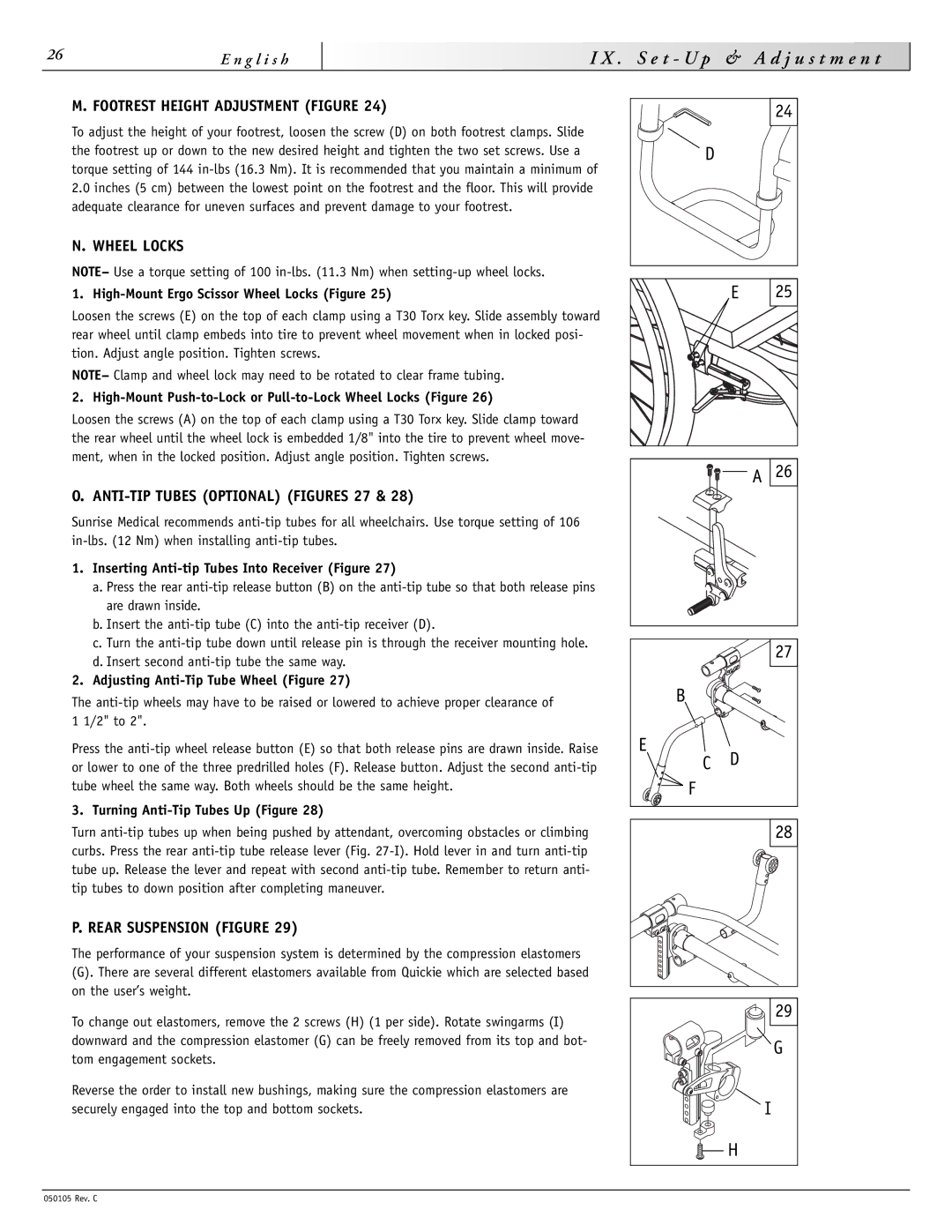
26 | E n g l i s h |
|










 I X . S e t - U p &
I X . S e t - U p &
A d j u s t m e n t

M. FOOTREST HEIGHT ADJUSTMENT (FIGURE 24)
To adjust the height of your footrest, loosen the screw (D) on both footrest clamps. Slide the footrest up or down to the new desired height and tighten the two set screws. Use a torque setting of 144
2.0inches (5 cm) between the lowest point on the footrest and the floor. This will provide adequate clearance for uneven surfaces and prevent damage to your footrest.
N. WHEEL LOCKS
NOTE– Use a torque setting of 100
1. High-Mount Ergo Scissor Wheel Locks (Figure 25)
Loosen the screws (E) on the top of each clamp using a T30 Torx key. Slide assembly toward rear wheel until clamp embeds into tire to prevent wheel movement when in locked posi- tion. Adjust angle position. Tighten screws.
NOTE– Clamp and wheel lock may need to be rotated to clear frame tubing.
2. High-Mount Push-to-Lock or Pull-to-Lock Wheel Locks (Figure 26)
Loosen the screws (A) on the top of each clamp using a T30 Torx key. Slide clamp toward the rear wheel until the wheel lock is embedded 1/8" into the tire to prevent wheel move- ment, when in the locked position. Adjust angle position. Tighten screws.
O. ANTI-TIP TUBES (OPTIONAL) (FIGURES 27 & 28)
Sunrise Medical recommends
1.Inserting Anti-tip Tubes Into Receiver (Figure 27)
a.Press the rear
b.Insert the
c.Turn the
d.Insert second
2.Adjusting Anti-Tip Tube Wheel (Figure 27)
The
Press the
3. Turning Anti-Tip Tubes Up (Figure 28)
Turn
P. REAR SUSPENSION (FIGURE 29)
The performance of your suspension system is determined by the compression elastomers
(G). There are several different elastomers available from Quickie which are selected based on the user’s weight.
To change out elastomers, remove the 2 screws (H) (1 per side). Rotate swingarms (I) downward and the compression elastomer (G) can be freely removed from its top and bot- tom engagement sockets.
Reverse the order to install new bushings, making sure the compression elastomers are securely engaged into the top and bottom sockets.
| 24 |
D |
|
E | 25 |
| A | 26 |
|
| 27 |
B |
|
|
E | D |
|
C |
| |
F |
|
|
|
| 28 |
29
G
I
H
050105 Rev. C
